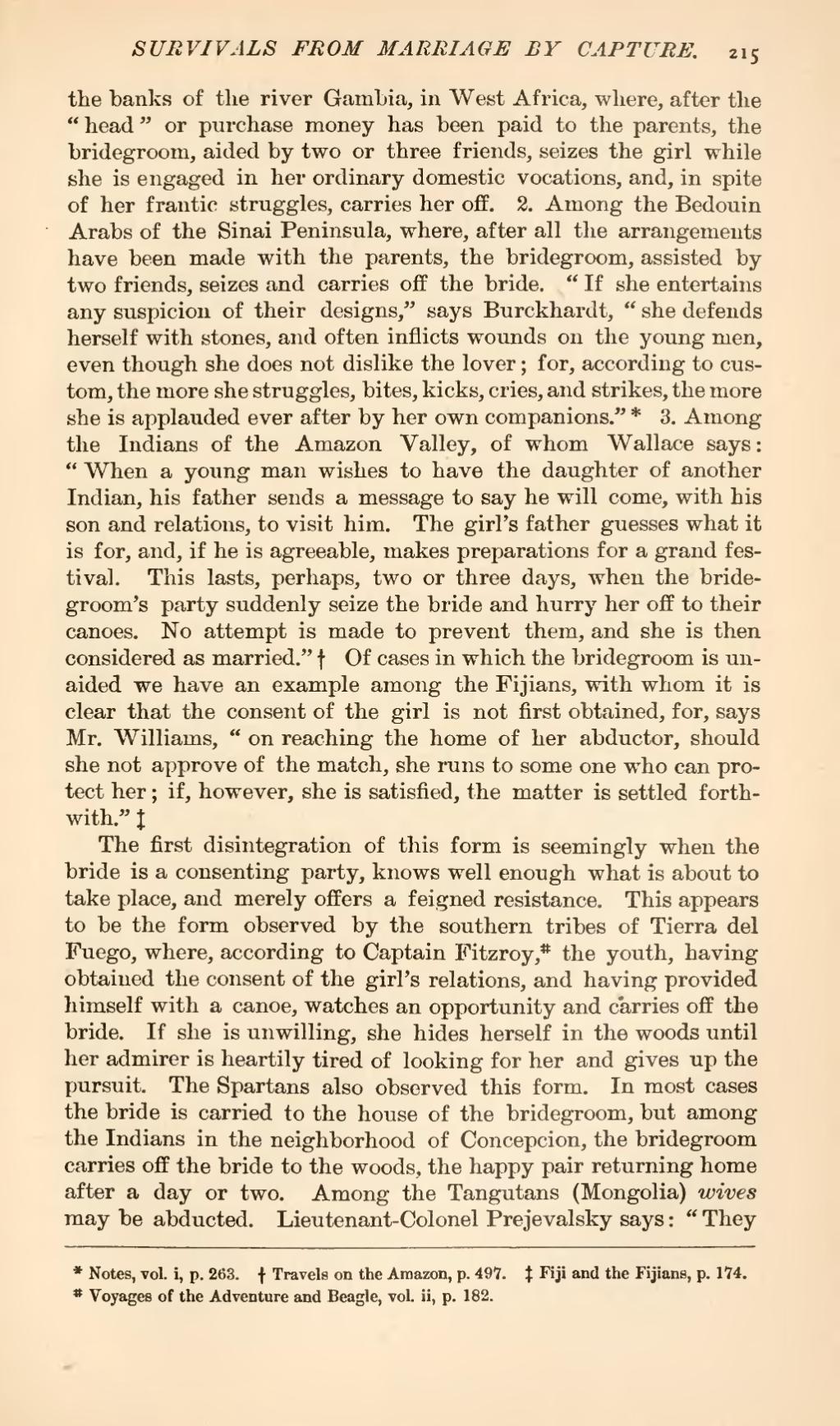the banks of the river Gambia, in West Africa, where, after the "head" or purchase money has been paid to the parents, the bridegroom, aided by two or three friends, seizes the girl while she is engaged in her ordinary domestic vocations, and, in spite of her frantic struggles, carries her off. 2. Among the Bedouin Arabs of the Sinai Peninsula, where, after all the arrangements have been made with the parents, the bridegroom, assisted by two friends, seizes and carries off the bride. "If she entertains any suspicion of their designs," says Burckhardt, "she defends herself with stones, and often inflicts wounds on the young men, even though she does not dislike the lover; for, according to custom, the more she struggles, bites, kicks, cries, and strikes, the more she is applauded ever after by her own companions."[1] 3. Among the Indians of the Amazon Valley, of whom Wallace says: "When a young man wishes to have the daughter of another Indian, his father sends a message to say he will come, with his son and relations, to visit him. The girl's father guesses what it is for, and, if he is agreeable, makes preparations for a grand festival. This lasts, perhaps, two or three days, when the bridegroom's party suddenly seize the bride and hurry her off to their canoes. No attempt is made to prevent them, and she is then considered as married."[2] Of cases in which the bridegroom is unaided we have an example among the Fijians, with whom it is clear that the consent of the girl is not first obtained, for, says Mr. Williams, "on reaching the home of her abductor, should she not approve of the match, she runs to some one who can protect her; if, however, she is satisfied, the matter is settled forthwith."[3]
The first disintegration of this form is seemingly when the bride is a consenting party, knows well enough what is about to take place, and merely offers a feigned resistance. This appears to be the form observed by the southern tribes of Tierra del Fuego, where, according to Captain Fitzroy,[4] the youth, having obtained the consent of the girl's relations, and having provided himself with a canoe, watches an opportunity and carries off the bride. If she is unwilling, she hides herself in the woods until her admirer is heartily tired of looking for her and gives up the pursuit. The Spartans also observed this form. In most cases the bride is carried to the house of the bridegroom, but among the Indians in the neighborhood of Concepcion, the bridegroom carries off the bride to the woods, the happy pair returning home after a day or two. Among the Tangutans (Mongolia) wives may be abducted. Lieutenant-Colonel Prejevalsky says: "They
